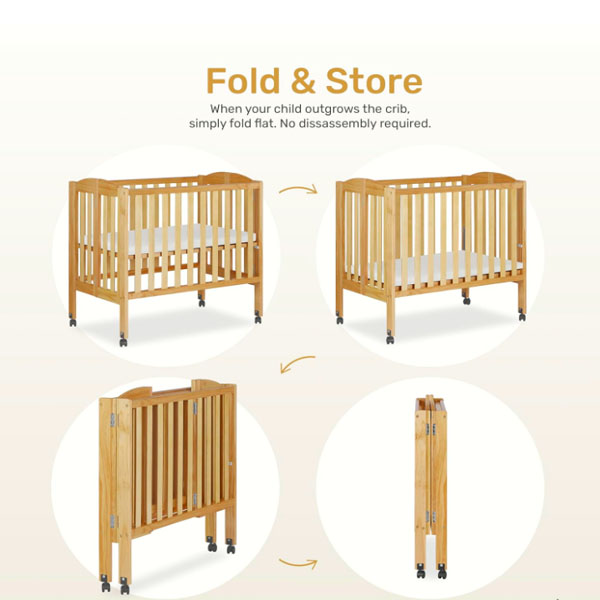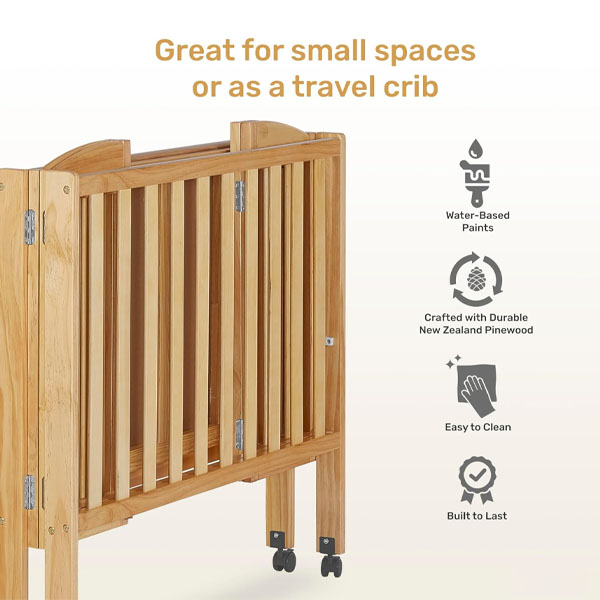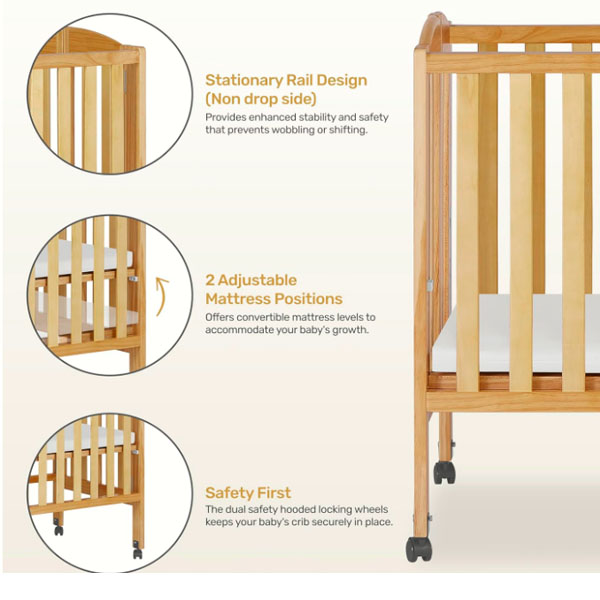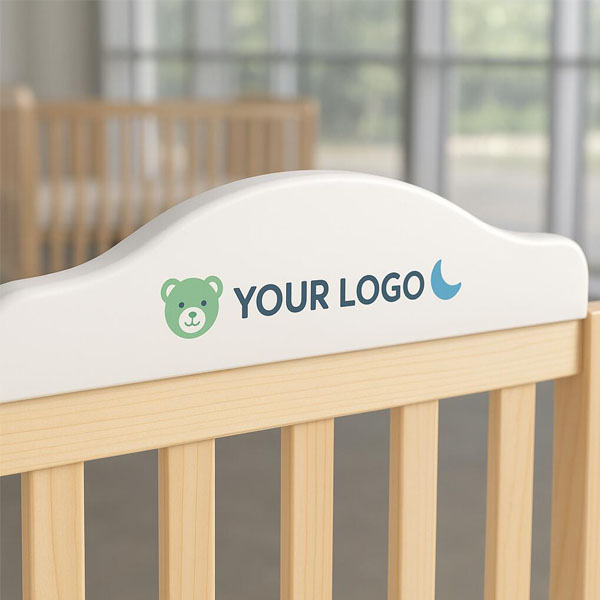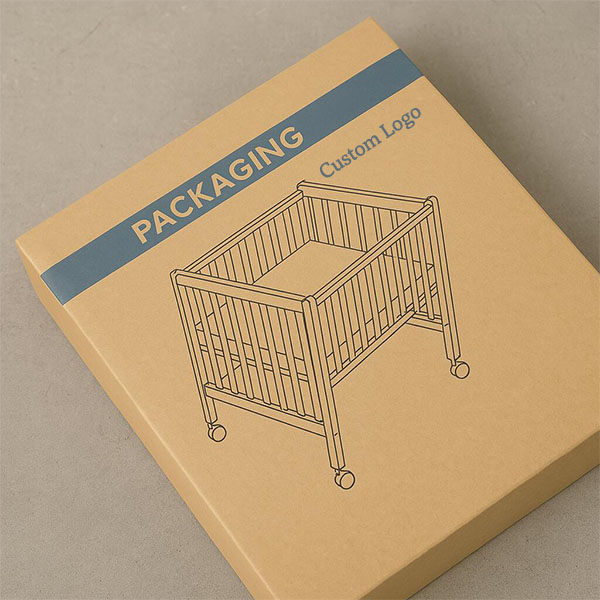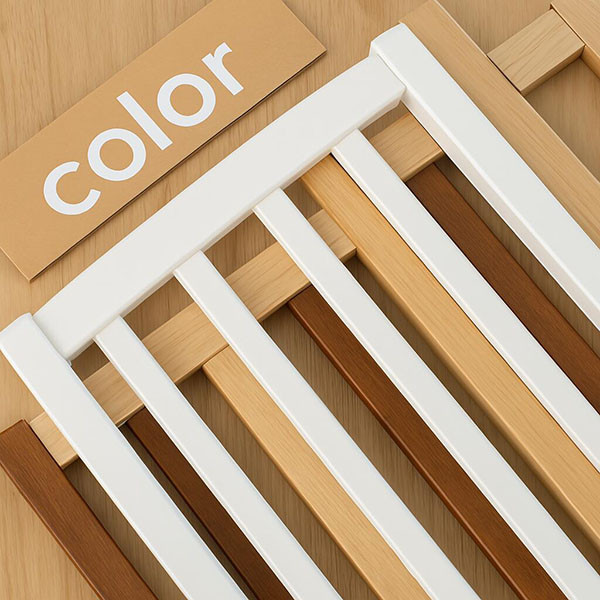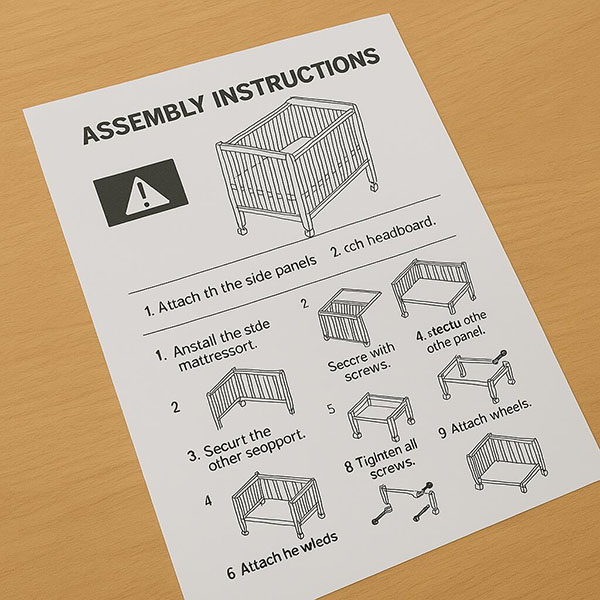What are four things that should not be in a crib?
Setting up a safe nursery is stressful. You worry if you’ve missed something that could harm a baby. Knowing what to remove from a crib is as important as choosing the crib itself.
To ensure a safe sleep environment, a crib should be completely empty except for a firm mattress with a fitted sheet. The four main things to always keep out are soft bedding like pillows or blankets, crib bumpers, soft toys, and sleep positioning devices.

Ensuring a crib is safe goes beyond just its construction. As a manufacturer, I work with buyers every day who are focused on creating the safest products possible. While we build cribs to the highest structural standards, how they are used at home is also a critical piece of the safety puzzle. This starts with understanding the fundamentals of the crib itself.
Is a wooden crib safe for babies?
Worried if wood is truly a safe choice for cribs? The material you specify directly impacts safety, quality, and your brand’s reputation. You need to be sure about your choice.
Yes, a wooden crib is one of the safest options when built correctly. The key is using solid hardwoods like beech or pine with certified non-toxic finishes. A safe wooden crib is made by a supplier who follows strict standards like EN 716 and ASTM F1169.

I’ve spent my career working with wood, and I can tell you that a well-made wooden crib is incredibly safe and durable. The conversation around safety has changed over the years. It’s no longer just about meeting the minimum requirements. Today, top buyers and discerning parents look for "active safety."
From Passive Prevention to Active Safety
Passive safety means the crib simply meets the basic rules, like correct slat spacing. It prevents known hazards. Active safety is a modern design philosophy where the crib anticipates potential issues and is built to prevent them proactively. For example, instead of just using non-toxic paint, an active safety design includes a teething rail. This plastic guard protects the baby from ingesting wood finish if they chew on the rail. It’s a feature that goes beyond the basic standard to offer a higher level of protection.
Key Features of a Safe Wooden Crib
When I work with a new client like Sophia, a senior buyer from Germany, we go through a detailed checklist.
- Solid Wood Construction: The frame must be solid wood, not MDF or particleboard. This ensures it won’t break under stress.
- Certified Finishes: We provide test reports (like EN 71-3) to prove our paints and finishes are free from heavy metals and harmful chemicals.
- Smooth, Rounded Edges: No sharp corners where a baby could get hurt.
- No Exposed Hardware: All screws and bolts should be designed so they cannot be loosened by a child or create a snag hazard.
A quality supplier doesn’t just build a product; they build a safe environment.
What are four things that should not be in a crib?
Overwhelmed by conflicting advice on crib safety? Adding the wrong things creates serious risks. Knowing exactly what to exclude is the first rule for ensuring a baby’s safety.
A crib must be kept bare to prevent suffocation and other hazards. The four things that should never be in a crib are: 1) soft bedding, including pillows and loose blankets, 2) crib bumpers, 3) soft toys and stuffed animals, and 4) wedges or sleep positioners.

The "bare is best" rule is the gold standard for safe sleep, recommended by pediatricians worldwide. While our job is to build a safe structure, it’s crucial for brands to educate end-users about what goes inside—or rather, what doesn’t. Each of these prohibited items represents a specific, preventable risk.
Why These Items Are Unsafe
Understanding the reasoning helps reinforce the importance of the rule.
| Item to Avoid | Primary Risk | Why it’s Unnecessary |
|---|---|---|
| Pillows & Blankets | Suffocation | Babies should be dressed in appropriate sleepwear, like a sleep sack, to stay warm. Pillows can block their airway. |
| Crib Bumpers | Suffocation, Entanglement | Modern cribs have mandatory slat spacing (under 6 cm), so a baby cannot get their head stuck. Bumpers serve no purpose and add risk. |
| Soft Toys | Suffocation, Climbing Aid | A toy can cover a baby’s face. An older baby can use a pile of toys as a step to climb out of the crib. |
| Sleep Positioners | Suffocation, Entrapment | These devices are not proven to be safe and can lead to a baby rolling into a position where they cannot breathe. |
A safe crib is an empty crib. The only things inside should be a firm, well-fitting mattress covered with a snug fitted sheet. This simple rule eliminates the most common in-crib hazards.
Are cribs from 1992 still safe?
Thinking of using a vintage crib? It might look charming, but using old furniture hides serious, even deadly, risks. Safety standards have changed dramatically for very good reasons.
Absolutely not. A crib from 1992 is not safe and should never be used for a baby. Safety regulations have been updated many times since then. Old cribs have dangerous features like drop-sides and wide slat spacing that are now illegal due to the risks they pose.

As someone in the industry, I can’t stress this enough. Cribs are not like other furniture. They are a safety device, and the technology and regulations behind them have evolved immensely. Using a crib that is decades old is like using a car without seatbelts or airbags. The risks are simply too high. I often have to explain to people that a "sturdy" old crib is not the same as a "safe" new one.
1992 Crib vs. Modern Crib
The differences are night and day. The standards we build to today, like EN 716 and ASTM F1169, involve rigorous testing that didn’t exist in the early 90s.
| Feature | 1992 Crib (Unsafe) | Modern Crib (Safe) |
|---|---|---|
| Side Rails | Often has a drop-side mechanism, which can fail and create a deadly gap. | All sides are fixed and stationary. Drop-sides are banned. |
| Slat Spacing | Could have wide, irregular spacing over 6 cm. | Spacing is legally required to be less than 6 cm to prevent head entrapment. |
| Paint & Finish | May contain lead-based paint, which is highly toxic. | All finishes must be certified non-toxic and lead-free. |
| Mattress Support | Often a flimsy metal spring base that can break. | Must use a strong, durable support that withstands stress tests. |
| Hardware | Protruding hardware that can snag clothing; screws can loosen easily. | Hardware is designed to be inaccessible and durable. |
There is no sentimental value that is worth the risk. Only a modern, certified crib should be used.
What are the rules for cribs?
Trying to navigate the complex world of crib regulations? Missing a single rule can lead to blocked imports or product recalls. Knowing the rules is your best protection.
The core rules for modern cribs include having fixed sides, slat spacing under 6 cm, robust mattress supports, and passing strict structural integrity tests. All materials must be certified non-toxic according to standards like CPSC in the US and EN 716 in Europe.
![A quality inspector measuring crib slat distance]
The rules for cribs are not just guidelines; they are legally binding requirements. For any buyer, understanding these rules is the first step in developing a new product. My team and I live by these standards every day. They are the foundation of every single crib we produce. But as I’ve mentioned, the best brands don’t just aim to meet the rules; they aim to exceed them.
Going Beyond the Basic Rules
True quality lies in the details that a basic spec sheet might miss. This is where a knowledgeable manufacturing partner adds enormous value. We encourage our clients to build "active safety" features into their products.
| Basic Rule | Advanced "Active Safety" Feature | Benefit to the Customer |
|---|---|---|
| Use non-toxic paint. | Add a plastic teething rail. | Protects the baby’s health and the crib’s finish when the baby bites the railing. |
| Slat spacing must be <6cm. | Use solid, single-piece slats. | Increases structural strength and removes any risk of a slat breaking or splintering. |
| No sharp edges. | Design with fully rounded, smooth-sanded corners. | Provides a superior tactile experience and removes any possibility of scrapes or bumps. |
Working with a supplier who understands these nuances ensures your product is not only compliant but also superior. It shows your customers that you have thought about their child’s safety from every possible angle, building trust and a premium reputation for your brand.
Conclusion
A safe crib is empty and built to modern standards. Avoid soft bedding, bumpers, and toys. Choose suppliers who exceed rules, focusing on active safety features for ultimate peace of mind.




